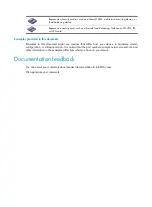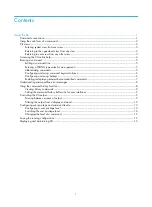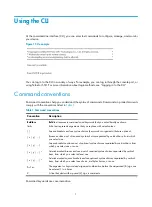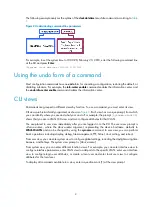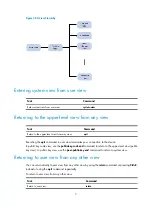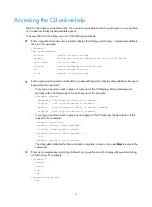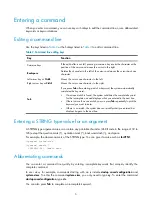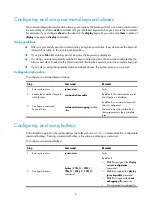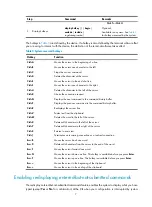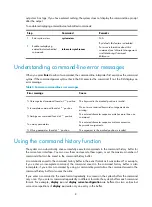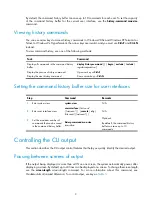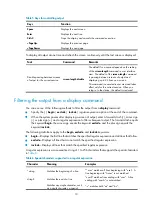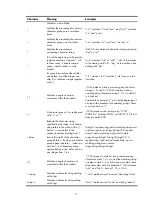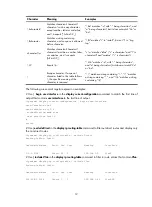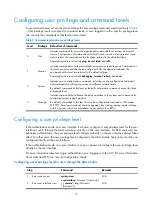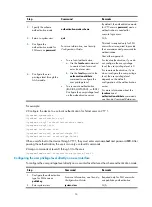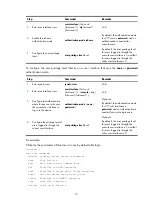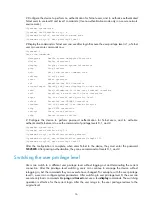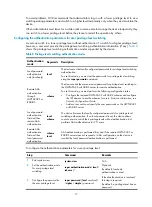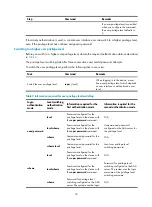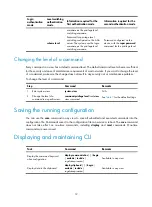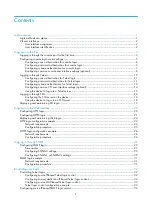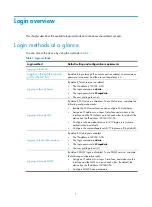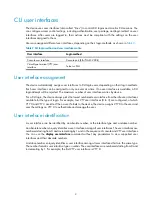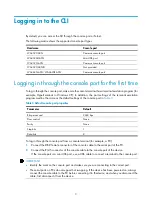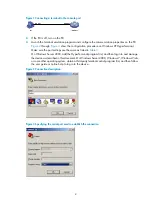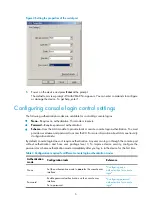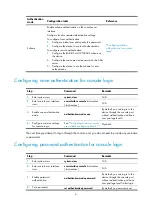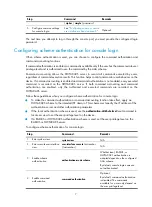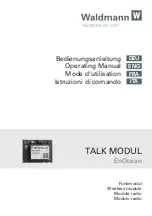
13
Configuring user privilege and command levels
To avoid unauthorized access, the device defines the user privilege levels and command levels in
. User privilege levels correspond to command levels. A user logged in with a specific privilege level
can use only the commands at that level or lower levels.
Table 7
Command levels and user privilege levels
Level
Privilege Default set of commands
0 Visit
Includes commands for network diagnosis and commands for accessing an external
device. Configuration of commands at this level cannot survive a device restart. Upon
device restart, the commands at this level are restored to the default settings.
Commands at this level include
ping
,
tracert
,
telnet
and
ssh2
.
1 Monitor
Includes commands for system maintenance and service fault diagnosis. Commands at
this level are not saved after being configured. After the device is restarted, the
commands at this level are restored to the default settings.
Commands at this level include
debugging
,
terminal
,
refresh
, and
send
.
2 System
Includes service configuration commands, including routing configuration commands
and commands for configuring services at different network levels.
By default, commands at this level include all configuration commands except for those
at manage level.
3 Manage
Includes commands that influence the basic operation of the system and commands for
configuring system support modules.
By default, commands at this level involve the configuration commands of file system,
FTP, TFTP, Xmodem download, user management, level setting, and parameter settings
within a system, which are not defined by any protocols or RFCs.
Configuring a user privilege level
If the authentication mode on a user interface is scheme, configure a user privilege level for the user
interface's users through the AAA module or directly on the user interface. For SSH users who use
public-key authentication, the user privilege level configured directly on the user interface always takes
effect. For other users, the user privilege level configured in the AAA module has priority over the one
configured directly on the user interface.
If the authentication mode on a user interface is none or password, configure the user privilege level
directly on the user interface.
For more information about user login authentication, see "Logging in to the CLI." For more information
about AAA and SSH, see
Security Configuration Guide.
Configuring a user privilege level for users through the AAA module
Step Command Remarks
1.
Enter system view.
system-view
N/A
2.
Enter user interface view.
user-interface
{
first-num1
[
last-num1
]
| {
console
|
vty
}
first-num2
[
last-num2
] }
N/A

